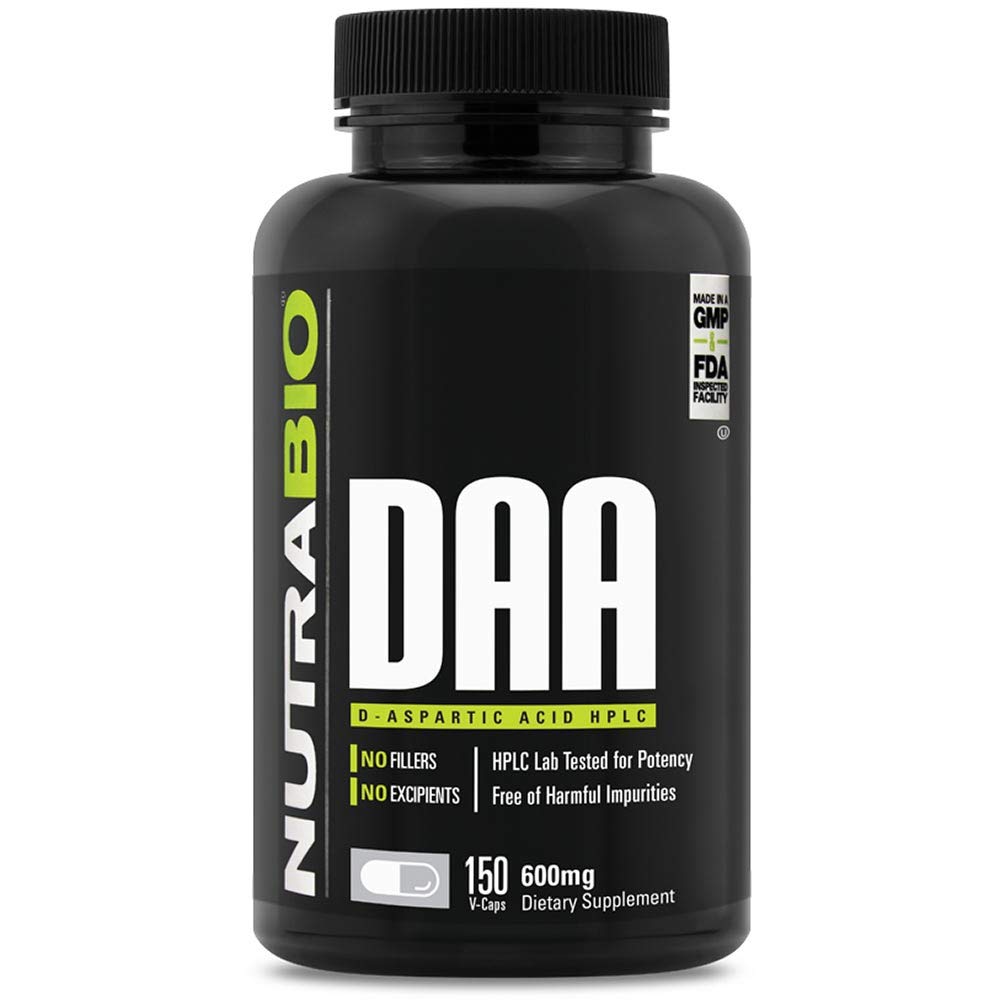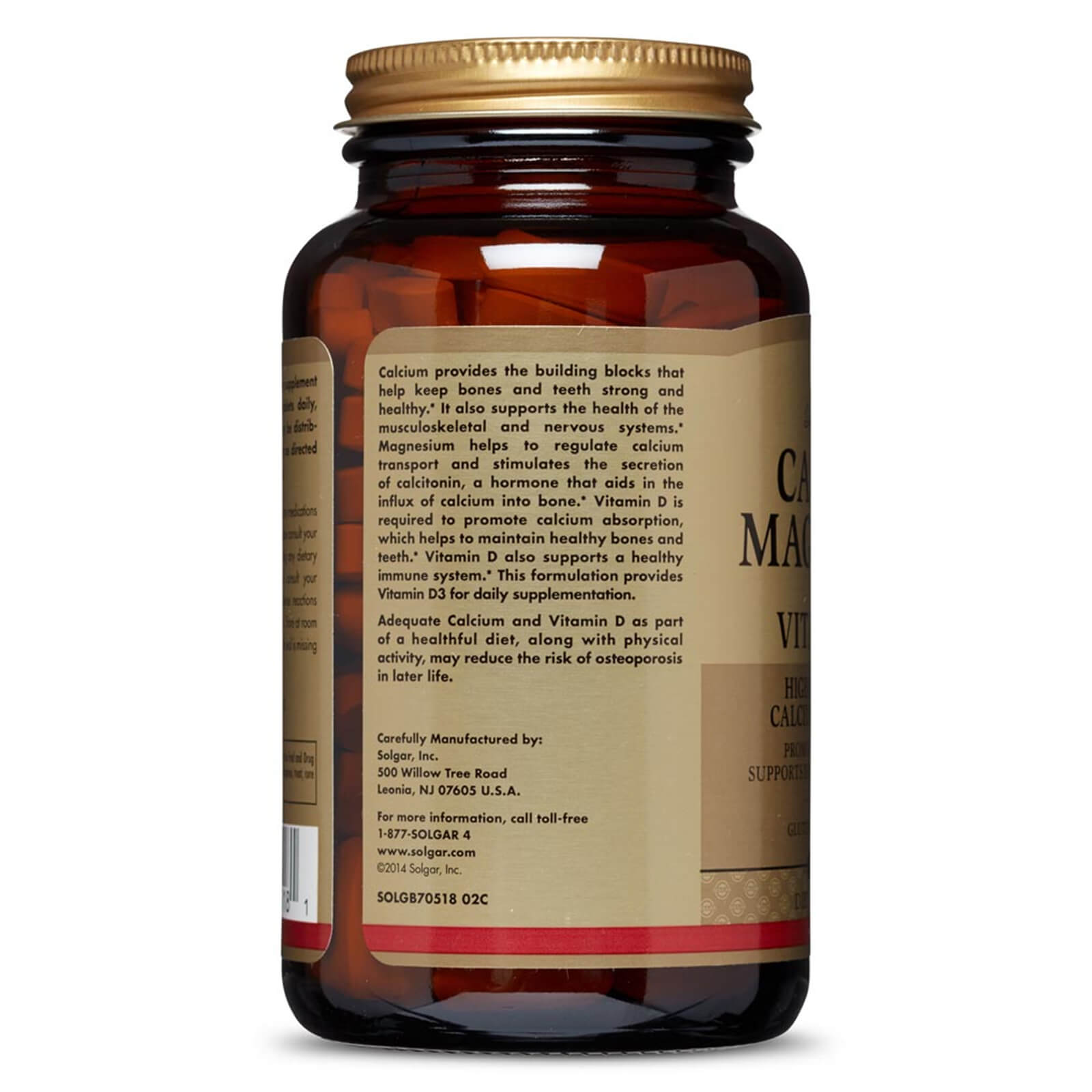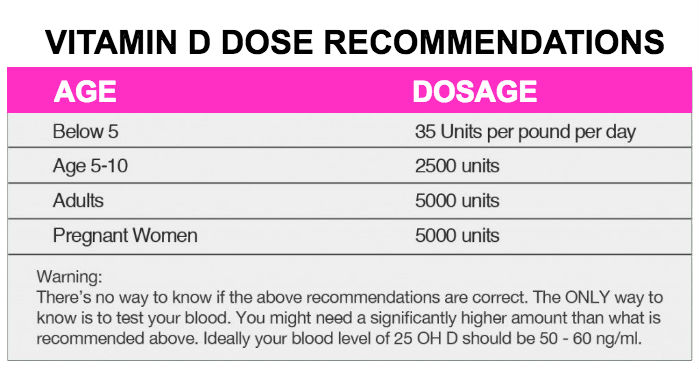Vitamin d pills side effects. Vitamin D Side Effects: Understanding Risks and Prevention Strategies
What are the common side effects of vitamin D supplements. How can you avoid vitamin D toxicity. What are the long-term consequences of excessive vitamin D intake. When should you be concerned about vitamin D side effects.
Common Side Effects of Vitamin D Supplementation
Vitamin D is crucial for various bodily functions, including calcium absorption, bone health, and immune system support. While many people take vitamin D supplements to address deficiencies, it’s important to be aware of potential side effects. Common side effects of vitamin D supplementation may include:
- Nausea and vomiting
- Headache
- Irritability
- Fatigue
- Increased thirst
- Frequent urination
- Loss of appetite and weight
These side effects are typically associated with excessive vitamin D intake over an extended period. It’s crucial to adhere to recommended dosages and consult a healthcare professional before starting any supplementation regimen.
Understanding Vitamin D Toxicity (Hypervitaminosis D)
Vitamin D toxicity, also known as hypervitaminosis D, is a rare but serious condition that can occur when excessive amounts of vitamin D are consumed over time. This condition primarily results from overuse of supplements rather than natural sources like sunlight or food.

Symptoms of vitamin D toxicity may include:
- Hypercalcemia (high blood calcium levels)
- Severe nausea and vomiting
- Weakness
- Constipation
- Kidney dysfunction
- High blood pressure
- Confusion
Are certain individuals more susceptible to vitamin D toxicity? Yes, people with certain medical conditions, such as sarcoidosis or hyperparathyroidism, may be at higher risk. Additionally, those taking medications that affect vitamin D metabolism should exercise caution.
Long-Term Consequences of Excessive Vitamin D Intake
Prolonged overconsumption of vitamin D can lead to serious health complications. Some potential long-term effects include:
- Kidney damage or failure
- Calcification of soft tissues and organs
- Osteoporosis
- Anemia
- Acidosis (increased blood acidity)
- Stunted growth in children
Can vitamin D toxicity be reversed? In most cases, yes. Discontinuing vitamin D supplements and restricting calcium intake can help normalize levels over time. However, severe cases may require medical intervention, including intravenous fluids, diuretics, or corticosteroids.

Timeline of Vitamin D Side Effects
Understanding the onset and duration of vitamin D side effects is crucial for early detection and management. Here’s what you need to know:
Onset of Side Effects
How quickly do vitamin D side effects manifest? Typically, mild side effects such as nausea or headache may appear relatively soon after starting high-dose supplementation. However, more serious complications related to vitamin D toxicity often develop gradually over months or even years of excessive intake.
Duration of Side Effects
Once vitamin D toxicity occurs, how long do the effects persist? The duration can vary depending on the severity of the toxicity and individual factors. In general, side effects may continue for several weeks to months after discontinuing vitamin D supplementation and reducing calcium intake. Severe cases might require more prolonged treatment and monitoring.
Contraindications and Warnings for Vitamin D Supplementation
While vitamin D is essential for health, certain individuals should exercise caution or avoid supplementation altogether. Contraindications for vitamin D supplementation include:

- Hypercalcemia
- Hyperparathyroidism
- Sarcoidosis
- Certain types of lymphoma
- Severe kidney disease
Is it possible to be hypersensitive to vitamin D? In rare cases, yes. Some individuals may have an unusually high sensitivity to vitamin D, causing adverse reactions even at normal intake levels. If you suspect hypersensitivity, consult a healthcare provider for proper evaluation and guidance.
Interactions Between Vitamin D and Other Medications
Vitamin D can interact with various medications, potentially affecting their efficacy or increasing the risk of side effects. Some notable interactions include:
- Steroids: May reduce vitamin D absorption
- Cholesterol-lowering drugs: Can decrease vitamin D levels
- Weight loss medications: May interfere with fat-soluble vitamin absorption
- Diuretics: Can affect calcium levels and vitamin D metabolism
- Antacids: May reduce vitamin D absorption
How can you manage potential drug interactions with vitamin D? Always inform your healthcare provider about all medications and supplements you’re taking. They can advise on proper dosing and potential adjustments to minimize interactions.
:max_bytes(150000):strip_icc()/do-iron-supplements-for-anemia-cause-upset-stomach-3522504-01-a8806fc982ab45998d75000e183bc406.png)
Strategies to Avoid Vitamin D Side Effects
Preventing vitamin D side effects is crucial for maintaining optimal health while supplementing. Here are some effective strategies:
- Follow recommended dosages: Adhere to guidelines provided by health authorities or your healthcare provider.
- Regular monitoring: Schedule periodic blood tests to check vitamin D and calcium levels.
- Balance with other nutrients: Ensure adequate intake of vitamin K2, magnesium, and calcium for proper vitamin D metabolism.
- Consider natural sources: Incorporate vitamin D-rich foods and safe sun exposure into your routine.
- Be aware of total intake: Account for vitamin D from all sources, including fortified foods and multivitamins.
How often should you have your vitamin D levels checked? For most people, annual testing is sufficient. However, those with risk factors or on high-dose supplementation may require more frequent monitoring.
Treatment Options for Vitamin D Side Effects
If you experience side effects from vitamin D supplementation, prompt action is essential. Here are some treatment approaches:

- Discontinue supplements: Stop taking vitamin D supplements immediately.
- Reduce calcium intake: Limit dietary calcium sources temporarily.
- Increase fluid intake: Drink plenty of water to help flush excess vitamin D and calcium.
- Seek medical attention: Consult a healthcare provider for proper evaluation and treatment.
- Medication interventions: In severe cases, treatments may include IV fluids, diuretics, or corticosteroids.
Can vitamin D toxicity be treated at home? While mild cases may improve with conservative measures, it’s crucial to consult a healthcare professional for proper diagnosis and management, especially if symptoms persist or worsen.
The Importance of Vitamin D Balance
Maintaining optimal vitamin D levels is a delicate balance between ensuring sufficiency and avoiding excess. While vitamin D deficiency is a widespread concern, it’s equally important to prevent overconsumption and potential toxicity.
What factors influence individual vitamin D requirements? Several factors can affect your vitamin D needs, including:

- Age
- Skin pigmentation
- Geographic location
- Sun exposure habits
- Diet
- Body weight
- Underlying health conditions
Given these variables, personalized approaches to vitamin D supplementation are often necessary. Working closely with a healthcare provider can help determine the most appropriate dosage for your individual needs.
Natural Sources of Vitamin D: A Safer Alternative?
While supplementation is sometimes necessary, obtaining vitamin D through natural sources can be a safer and more balanced approach for many individuals. Natural sources of vitamin D include:
- Sunlight exposure (with proper sun protection)
- Fatty fish (salmon, mackerel, sardines)
- Egg yolks
- Mushrooms exposed to UV light
- Fortified foods (milk, orange juice, cereals)
Are natural sources of vitamin D as effective as supplements? In many cases, yes. The body can efficiently produce and regulate vitamin D from sunlight exposure, and dietary sources provide additional benefits beyond just vitamin D. However, for individuals with limited sun exposure or dietary restrictions, supplements may still be necessary.

Special Considerations for At-Risk Populations
Certain groups may be at higher risk of vitamin D deficiency or may require special attention when it comes to supplementation. These populations include:
- Older adults
- People with dark skin
- Individuals with limited sun exposure
- Those with malabsorption disorders
- Obese individuals
- Pregnant and breastfeeding women
How should vitamin D supplementation be approached for these at-risk groups? While these populations may benefit from supplementation, it’s crucial to work closely with a healthcare provider to determine appropriate dosages and monitor for potential side effects. Regular blood tests and personalized recommendations are key to ensuring safe and effective supplementation.
The Role of Vitamin D in Overall Health
Despite the potential risks associated with excessive intake, it’s important to recognize the vital role vitamin D plays in maintaining overall health. Adequate vitamin D levels are essential for:
- Bone health and strength
- Calcium absorption and metabolism
- Immune system function
- Muscle strength and performance
- Cardiovascular health
- Mood regulation
- Cancer prevention (potentially)
How does vitamin D contribute to these various health aspects? Vitamin D acts as a hormone in the body, influencing numerous physiological processes. It helps regulate calcium and phosphate levels, which are crucial for bone mineralization. Additionally, vitamin D receptors are found in various tissues throughout the body, indicating its wide-ranging effects on cellular function and health.

Future Directions in Vitamin D Research
As our understanding of vitamin D continues to evolve, ongoing research is exploring new aspects of its function and potential therapeutic applications. Some areas of current interest include:
- Optimal dosing strategies for different populations
- The role of vitamin D in autoimmune diseases
- Potential benefits in cancer prevention and treatment
- Interactions between vitamin D and the gut microbiome
- Genetic factors influencing vitamin D metabolism and requirements
What promising developments are on the horizon for vitamin D research? Scientists are investigating novel delivery methods, such as transdermal patches or sublingual formulations, which may provide more consistent and controlled dosing. Additionally, research into vitamin D analogs and receptor modulators may lead to new therapeutic options with fewer side effects.
Conclusion: Balancing the Benefits and Risks of Vitamin D
Vitamin D is undoubtedly essential for human health, but like many nutrients, it follows the principle of “too much of a good thing.” While vitamin D deficiency is a widespread concern, it’s equally important to be aware of the potential risks associated with excessive intake.

By understanding the common side effects, recognizing the signs of toxicity, and implementing strategies to maintain optimal levels, individuals can harness the benefits of vitamin D while minimizing potential risks. Regular monitoring, personalized approaches, and open communication with healthcare providers are key to achieving this balance.
As research continues to uncover new insights into vitamin D’s complex role in human health, staying informed and adaptable in our approach to supplementation will be crucial. By doing so, we can ensure that this “sunshine vitamin” continues to shine brightly in our pursuit of optimal health and well-being.
Vitamin D side effects and how to avoid them
Vitamin D side effects can include vitamin D toxicity from taking too high of a dosage over a sustained period
Common vitamin D side effects | Serious side effects | Vitamin D toxicity | Side effects timeline | Contraindications | Warnings | Interactions | How to avoid side effects | How to treat side effects
Vitamin D is an essential nutrient responsible for calcium absorption and maintaining adequate levels of calcium in the body. It’s important for bone health, bone strength, nerve functioning, muscle strength, and the immune system. Vitamin D is normally produced by the skin when it is exposed to the sun’s ultraviolet-B radiation (UVB) but it also can be found in certain vitamin supplements and some foods.
Having low vitamin D in the body is both a serious and common problem. Many children have a vitamin D deficiency, and the problem is common in adults who are overweight, pregnant, use sunblock, or otherwise don’t get enough sun exposure. Chronic vitamin D deficiency can lead to weak bones, bone fractures, and rickets (in children), and it is the major cause of generalized bone pain and muscle pain complaints. People take vitamin D supplements to avoid or correct vitamin D deficiencies. These supplements—available as synthetic vitamin D2 (ergocalciferol) and vitamin D3 (cholecalciferol)—come in both over-the-counter and prescription dose strengths. Higher-dose prescription vitamin D is usually given to people with vitamin D deficiency, low parathyroid function (hypoparathyroidism, a condition that causes low blood calcium), and bone softening (osteomalacia). Side effects from both over-the-counter and vitamin D supplements are generally only a problem if too much vitamin D is taken over a long period.
Chronic vitamin D deficiency can lead to weak bones, bone fractures, and rickets (in children), and it is the major cause of generalized bone pain and muscle pain complaints. People take vitamin D supplements to avoid or correct vitamin D deficiencies. These supplements—available as synthetic vitamin D2 (ergocalciferol) and vitamin D3 (cholecalciferol)—come in both over-the-counter and prescription dose strengths. Higher-dose prescription vitamin D is usually given to people with vitamin D deficiency, low parathyroid function (hypoparathyroidism, a condition that causes low blood calcium), and bone softening (osteomalacia). Side effects from both over-the-counter and vitamin D supplements are generally only a problem if too much vitamin D is taken over a long period.
Common side effects of vitamin D
Common side effects of vitamin D supplements may include:
- Nausea and vomiting
- Headache
- Irritability
- Tiredness
- Excess thirst
- Frequent urination
- Appetite and weight loss
Some adverse effects are due to taking too much vitamin D. In those cases, vitamin D toxicity (hypervitaminosis D) can cause several problems:
In those cases, vitamin D toxicity (hypervitaminosis D) can cause several problems:
- High levels of calcium in the blood (hypercalcemia)
- Vomiting
- Nausea
- Headache
- Irritability
- Loss of appetite
- Weight loss
- Weakness
- Constipation
- Kidney dysfunction including:
- Excessive or frequent urination
- Thirst
- High blood pressure
- High calcium in the urine
- Kidney damage (which could cause death)
- Acidic blood (acidosis)
- Anemia
- Calcium deposits (calcification) in the blood vessels, heart, lungs, kidneys, and other soft tissues
- Osteoporosis (a condition where the bones become weak and brittle)
- Slow growth in children
Serious side effects of vitamin D
Many of the common side effects of vitamin D overdose are very serious and related to how long calcium remains at high levels in the body. These include:
These include:
- Kidney dysfunction
- Kidney damage
- Kidney failure
- Acidosis
- Anemia
- Calcification of soft tissues, blood vessels, and organs
- Osteoporosis
- Slow growth and dwarfism (in children)
Vitamin D toxicity (hypervitaminosis D)
Overdosing on vitamin D for months or years can cause a rare but serious condition called hypervitaminosis D. High vitamin D levels in the blood raises calcium levels to dangerous levels and also leeches calcium from the bones, producing the side effects listed above. Overdosing on vitamin D only happens when people take too many vitamin D supplements or are prescribed high doses of vitamin D. However, people prescribed high-dose vitamin D will have regular blood tests to measure vitamin D and calcium levels to avoid vitamin D toxicity. About 4,000 people a year in the United States are diagnosed with vitamin D toxicity. In some extremely rare cases, people can have hypersensitivity to vitamin D. In those cases, normal vitamin D intake could be an overdose and cause high blood calcium. In these cases, vitamin D intake will be restricted.
In some extremely rare cases, people can have hypersensitivity to vitamin D. In those cases, normal vitamin D intake could be an overdose and cause high blood calcium. In these cases, vitamin D intake will be restricted.
How soon do vitamin D side effects start?
Vitamin D side effects usually take months or years of overdosing to become a problem, though some of the milder side effects such as vomiting or excessive urination may be some of the first symptoms to appear.
How long do vitamin D side effects last?
The side effects of vitamin D toxicity can last for two months or more after vitamin D and calcium intake have been restricted. In terms of treatment for vitamin D toxicity, some patients may need to limit dietary calcium and consume excess fluids. More severe cases require aggressive treatment with IV saline, diuretics (to help remove calcium from the body), and corticosteroids. Some patients need dialysis and/or other medications.
What are the long-term side effects of vitamin D?
Many side effects of vitamin D supplements are long-term side effects due to taking too much vitamin D. What constitutes an overdose has not been determined, but the Institute of Medicine has set the upper safe limit at 4,000 International Units daily. Overdosing could take years before becoming a problem (if problems develop at all). There is a small window between where vitamin D is therapeutic and where it can be toxic. Prescription doses can be as high as 500,000 IU a day in certain cases, so healthcare providers will monitor blood levels of both vitamin D and calcium at least every two weeks in these patients. They will modify treatment if high blood calcium becomes a problem. Many patients only need to take a small daily dose or a larger weekly dose (for example, 50,000 IU per week) and will be monitored occasionally, but not as frequently as those who take higher doses. Your healthcare provider will tell you how much vitamin D to take and how often you will need blood work.
What constitutes an overdose has not been determined, but the Institute of Medicine has set the upper safe limit at 4,000 International Units daily. Overdosing could take years before becoming a problem (if problems develop at all). There is a small window between where vitamin D is therapeutic and where it can be toxic. Prescription doses can be as high as 500,000 IU a day in certain cases, so healthcare providers will monitor blood levels of both vitamin D and calcium at least every two weeks in these patients. They will modify treatment if high blood calcium becomes a problem. Many patients only need to take a small daily dose or a larger weekly dose (for example, 50,000 IU per week) and will be monitored occasionally, but not as frequently as those who take higher doses. Your healthcare provider will tell you how much vitamin D to take and how often you will need blood work.
Vitamin D contraindications
Vitamin D supplements should never be taken by people with:
- Vitamin D toxicity
- High blood calcium
- Allergies to any of the ingredients in the supplement
- Renal osteodystrophy (a complication of kidney disease that affects the bones and soft tissues)
Pregnancy
High-dose vitamin D is not recommended in pregnant women, although taking the suggested daily allowance is not prohibited. Vitamin D toxicity can affect a fetus and cause heart defects and developmental disabilities.
Vitamin D toxicity can affect a fetus and cause heart defects and developmental disabilities.
Breastfeeding
High-dose vitamin D is not recommended in women who are breastfeeding. The infant is at risk of high blood calcium due to ingesting high vitamin D doses through breast milk. If you are breastfeeding, consult your healthcare provider before taking vitamin D.
Children
Children who need vitamin D supplementation will be prescribed or recommended an individualized dose and carefully monitored with regular blood tests to prevent vitamin D toxicity.
Older adults
High-dose vitamin D is not well-studied in older patients. People aged 65 and older are less efficient at absorbing vitamin D from foods or supplements. If vitamin D supplementation is a concern, blood tests can help identify a vitamin D deficiency. A healthcare provider can then suggest a supplementation regimen. For prescription vitamin D, a healthcare provider will start at the lowest possible dose and regularly perform blood tests to monitor vitamin D and calcium levels.
Vitamin D warnings
As a supplement widely available in over-the-counter vitamins and multivitamins, vitamin D has only a few warnings and cautions. The most important warning: Don’t overdo it. Either follow the suggested guidelines or take the prescribed dose, but no more than that.
Cautions
A few medical conditions may cause problems when taking vitamin D, particularly in high doses. These include:
- Kidney stones. Raising vitamin D levels in the body can increase calcium levels in urine, which can contribute to the growth of some types of kidney stones.
- Kidney dysfunction. People with kidney disease are more likely to experience high calcium when taking vitamin D. Higher calcium in the blood makes the kidneys work harder to filter blood, putting an added strain on the kidneys.
- High phosphate levels. Vitamin D regulates the absorption of phosphate and calcium through the intestines.
 Higher levels of vitamin D will cause the digestive system to absorb more phosphate, worsening pre-existing high phosphate levels.
Higher levels of vitamin D will cause the digestive system to absorb more phosphate, worsening pre-existing high phosphate levels.
- Malabsorption syndrome. Some medical conditions such as Crohn’s disease, cystic fibrosis, liver disease, or gallbladder problems diminish the digestive system’s ability to absorb fat-soluble vitamins like vitamin D. In those cases, higher amounts of vitamin D may need to be given.
Abuse and dependence
Vitamin D has no risk of drug abuse or drug dependence.
Overdose
A single overdose of vitamin D will not cause major problems, though there may be digestive system issues. If too much vitamin D is taken at once, call a poison control center for advice. If a child takes too much vitamin D, call poison control. Because vitamin D toxicity can be very serious, take the child to the emergency room.
Daily and chronic overdosing, however, can result in vitamin D toxicity, a serious medical condition characterized by the side effects listed above. If any cluster of these symptoms is noticed, immediate medical help is needed.
If any cluster of these symptoms is noticed, immediate medical help is needed.
Vitamin D interactions
Vitamin D supplements have few drug interactions. Most involve drugs that reduce the effectiveness of taking the supplement.
- Vitamin D. To avoid vitamin D toxicity, don’t combine vitamin D supplements with other vitamin D supplements unless the total daily dose is within guidelines.
- Calcium. To avoid high calcium, be prudent in taking calcium supplements or medicines containing calcium such as some antacids.
- Mineral oil. Mineral oil can interfere with the body’s absorption of vitamin D through the intestines.
- Bile acid resins. Used to treat high cholesterol, bile acid resins interfere with the digestive system’s ability to absorb fat-soluble vitamins like vitamin D.
- Thiazide diuretics.
 Combining vitamin D2 with thiazide diuretics such as hydrochlorothiazide can cause high calcium in people with low parathyroid function.
Combining vitamin D2 with thiazide diuretics such as hydrochlorothiazide can cause high calcium in people with low parathyroid function.
How to avoid vitamin D side effects
Avoiding vitamin D side effects involves a simple rule: don’t take too much. Here’s how to do it.
1. Know the right amount of vitamin D to take each day
Don’t guess. Look this up. There are two major guidelines for vitamin D intake. The Endocrine Society recommends 1,500 to 2,000 IU of vitamin D daily for adults. Infants less than one-year-old should get 400 to 1,000 IU daily, and children and adolescents should get 600 to 1,000 IU each day. The Institute of Medicine suggests lower daily doses: 400 IU daily for children and adults, and up to 800 IU daily for adults 71 years and older. Both recommendations are well below the maximum safe daily dose of 4,000 IU. Either way, your best bet is to ask your healthcare provider or your child’s pediatrician for a dosage recommendation based on lab results and/or guidelines.
2. Know how much vitamin D is being taken each day
Many foods are fortified with vitamin D including milk, breakfast cereals, bread, and children’s foods. It may be possible that there’s enough vitamin D already in the diet, particularly for kids with a fondness for these foods. Check all the foods being eaten each day. Check any dietary supplements, like fish oil, for vitamin D. Add up the daily vitamin D intake. This will determine how many vitamin D supplements need to be taken.
3. Know how much calcium to take each day
Vitamin D toxicity is also related to calcium intake. The IOM recommends a daily calcium dose of:
- Children ages 1 to 3 years old: 500 mg per day
- Children ages 4 to 8 years old: 800 mg per day
- Children/teenagers ages 9 to 18 years old: 1,300 mg per day
- Women 19 to 50 years old: 800 mg per day
- Women > 50 years old: 1,000 mg per day
- Men up to 71 years old: 800 mg per day
- Men 71 years and older: 1,000 mg per day
Again, there may be enough calcium in the diet, so take a look at all the other foods, dietary supplements, and calcium-containing drugs that are being taken to decide how much calcium needs to be added in the form of supplements.
4. Tell the prescriber about all medical conditions
If vitamin D is being prescribed by a healthcare professional, make sure the prescriber knows about all medical conditions and any drugs or supplements being taken. The most important are:
- Kidney disease
- Kidney stones
- High phosphate in the blood
- Crohn’s disease
- Gallbladder disease
- Liver disease
- Cystic fibrosis
- Pregnancy or pregnancy plans
- Breastfeeding or breastfeeding plans
5. Keep all follow-up appointments
If prescribed high doses of vitamin D, keep all follow-up and lab appointments. Many of the doses prescribed are enough to produce vitamin D toxicity, so regular blood tests are required to spot high levels of vitamin D or calcium before kidneys or tissues are damaged.
How to treat side effects of vitamin D
If any cluster of symptoms associated with vitamin D toxicity is noticed, stop using vitamin D and calcium supplements. Get immediate medical attention.
Get immediate medical attention.
Sources
- Drisdol prescribing information, U.S. National Library of Medicine
- Ergocalciferol, Epocrates
- Ergocalciferol drug summary, Prescriber’s Digital Reference
- IOM releases report on dietary reference intakes for calcium and vitamin D, American Family Physician
- Vitamin D, StatPearls
- Vitamin D toxicity—a clinical review, Frontiers in Endocrinology
Cholecalciferol (Vitamin D3): MedlinePlus Drug Information
pronounced as (koe” le kal sif’ er ol)
To use the sharing features on this page, please enable JavaScript.
Cholecalciferol (vitamin D3) is used as a dietary supplement when the amount of vitamin D in the diet is not enough. People most at risk for vitamin D deficiency are older adults, breastfed infants, people with dark skin, obese people, and those with limited sun exposure, or gastrointestinal disease (GI; affecting the stomach or intestines) such as Crohn’s disease or celiac disease. Cholecalciferol (vitamin D3) is also used along with calcium to prevent and treat bone diseases such as rickets (softening and weakening of bones in children caused by lack of vitamin D), osteomalacia (softening and weakening of bones in adults caused by lack of vitamin D), and osteoporosis (a condition in which the bones become thin and weak and break easily). Cholecalciferol (vitamin D3) is in a class of medications called vitamin D analogs. Cholecalciferol is needed by the body for healthy bones, muscles, nerves, and to support the immune system. It works by helping the body to use more of the calcium found in foods or supplements.
People most at risk for vitamin D deficiency are older adults, breastfed infants, people with dark skin, obese people, and those with limited sun exposure, or gastrointestinal disease (GI; affecting the stomach or intestines) such as Crohn’s disease or celiac disease. Cholecalciferol (vitamin D3) is also used along with calcium to prevent and treat bone diseases such as rickets (softening and weakening of bones in children caused by lack of vitamin D), osteomalacia (softening and weakening of bones in adults caused by lack of vitamin D), and osteoporosis (a condition in which the bones become thin and weak and break easily). Cholecalciferol (vitamin D3) is in a class of medications called vitamin D analogs. Cholecalciferol is needed by the body for healthy bones, muscles, nerves, and to support the immune system. It works by helping the body to use more of the calcium found in foods or supplements.
Cholecalciferol (vitamin D3) comes as a capsule, gel capsule, chewable gel (gummy), tablet, and liquid drops to take by mouth. It is usually taken once or twice daily depending on the preparation, your age, and your medical condition(s). Cholecalciferol is available without a prescription, but your doctor may prescribe cholecalciferol to treat certain conditions. Check with your doctor or pharmacist before taking a cholecalciferol (vitamin D) supplement. Take cholecalciferol at around the same time every day. Follow the directions on your product label or doctor’s instructions carefully, and ask your doctor or pharmacist to explain any part you do not understand. Take cholecalciferol exactly as directed. Do not take more or less of it or take it more often than recommended by your doctor.
It is usually taken once or twice daily depending on the preparation, your age, and your medical condition(s). Cholecalciferol is available without a prescription, but your doctor may prescribe cholecalciferol to treat certain conditions. Check with your doctor or pharmacist before taking a cholecalciferol (vitamin D) supplement. Take cholecalciferol at around the same time every day. Follow the directions on your product label or doctor’s instructions carefully, and ask your doctor or pharmacist to explain any part you do not understand. Take cholecalciferol exactly as directed. Do not take more or less of it or take it more often than recommended by your doctor.
Cholecalciferol liquid drops may be added to your child’s food or drink.
Cholecalciferol supplements are available alone and in combination with vitamins, and in combination with medications.
This medication may be prescribed for other uses; ask your doctor or pharmacist for more information.
Before taking cholecalciferol,
- tell your doctor and pharmacist if you are allergic to cholecalciferol, any other medications, or any of the ingredients in cholecalciferol products.
 Ask your pharmacist for a list of the ingredients.
Ask your pharmacist for a list of the ingredients. - tell your doctor and pharmacist what other prescription and nonprescription medications, vitamins, nutritional supplements, and herbal products you are taking or plan to take. Be sure to mention any of the following: calcium supplements, carbamazepine (Equetro, Teril, others), cholestyramine (Prevalite), multivitamins, orlistat (Alli, Xenical), phenobarbital, phenytoin (Dilantin), prednisone (Rayos), thiazide diuretics (”water pills”), or other cholecalciferol (vitamin D) supplements and fortified foods. Your doctor may need to change the doses of your medications or monitor you carefully for side effects.
- tell your doctor if you have or have ever had hyperparathyroidism (a condition in which the body produces too much parathyroid hormone [PTH; a natural substance needed to control the amount of calcium in the blood]), kidney disease, or have high blood levels of calcium.
- tell your doctor if you are pregnant, plan to become pregnant, or are breast-feeding.
 If you become pregnant while taking cholecalciferol (vitamin D3), call your doctor.
If you become pregnant while taking cholecalciferol (vitamin D3), call your doctor.
When cholecalciferol (vitamin D3) is used to treat and prevent bone diseases, you should eat and drink of foods and drinks that are rich in calcium. If you find it difficult to eat enough calcium-rich foods, tell your doctor. In that case, your doctor can prescribe or recommend a calcium supplement.
Unless your doctor tells you otherwise, continue your normal diet.
Take the missed dose as soon as you remember it. However, if it is almost time for the next dose, skip the missed dose and continue your regular dosing schedule. Do not take a double dose to make up for a missed one.
Cholecalciferol (vitamin D
3) may cause side effects. Tell your doctor if any of these symptoms are severe or do not go away:
- loss of appetite
- weight loss
- nausea
- vomiting
- constipation
Cholecalciferol (vitamin D3) may cause other side effects. Call your doctor if you have any unusual problems while taking this vitamin.
Call your doctor if you have any unusual problems while taking this vitamin.
If you experience a serious side effect, you or your doctor may send a report to the Food and Drug Administration’s (FDA) MedWatch Adverse Event Reporting program online (http://www.fda.gov/Safety/MedWatch) or by phone (1-800-332-1088).
Keep this vitamin in the container it came in, tightly closed, and out of reach of children. Store it at room temperature and away from excess heat and moisture (not in the bathroom).
It is important to keep all medication out of sight and reach of children as many containers (such as weekly pill minders and those for eye drops, creams, patches, and inhalers) are not child-resistant and young children can open them easily. To protect young children from poisoning, always lock safety caps and immediately place the medication in a safe location – one that is up and away and out of their sight and reach. http://www.upandaway.org
Unneeded medications should be disposed of in special ways to ensure that pets, children, and other people cannot consume them. However, you should not flush this medication down the toilet. Instead, the best way to dispose of your medication is through a medicine take-back program. Talk to your pharmacist or contact your local garbage/recycling department to learn about take-back programs in your community. See the FDA’s Safe Disposal of Medicines website (http://goo.gl/c4Rm4p) for more information if you do not have access to a take-back program.
However, you should not flush this medication down the toilet. Instead, the best way to dispose of your medication is through a medicine take-back program. Talk to your pharmacist or contact your local garbage/recycling department to learn about take-back programs in your community. See the FDA’s Safe Disposal of Medicines website (http://goo.gl/c4Rm4p) for more information if you do not have access to a take-back program.
In case of overdose, call the poison control helpline at 1-800-222-1222. Information is also available online at https://www.poisonhelp.org/help. If the victim has collapsed, had a seizure, has trouble breathing, or can’t be awakened, immediately call emergency services at 911.
Symptoms of overdose may include:
- loss of appetite
- weight loss
- nausea
- vomiting
- constipation
- weakness
- Fosamax® Plus D (containing alendronate, cholecalciferol)
- Tri-Vi-Sol® (containing Vitamin A, Vitamin C, Vitamin D)
- Viactiv® Calcium Plus Vitamin D (containing calcium, vitamin D)
Last Revised – 10/15/2020
Browse Drugs and Medicines
💊 Composition of the preparation Vitamin D 3 ✅ Use of the preparation Vitamin D 3 Keep for yourself Search for analogues Interaction Description of the active ingredients of the preparation Vitamin D 3 The scientific information provided is general and cannot be used to make decisions. Update date: 2020. Marketing authorization holder: MARBIOPHARM JSC ATX code: A11CC05 (Cholecalciferol) Active substance: Rec.INN WHO registered Dosage form
Release form, packaging and composition |
| E20 | Hypoparathyroidism |
| E20.1 | Pseudohypoparathyroidism |
| E55 | Vitamin D deficiency |
| E55.0 | Rickets active |
| M83 | Osteomalacia in adults |
| M90 | Osteopathy in diseases classified elsewhere |
| R29.0 | Tetanya |
Dosing regimen
The method of administration and dosing regimen of a particular drug depends on its form of release and other factors. The optimal dosage regimen is determined by the doctor. Compliance of the dosage form of a particular drug with indications for use and dosing regimen should be strictly observed.
Compliance of the dosage form of a particular drug with indications for use and dosing regimen should be strictly observed.
Individual, depending on the indication, the dosage form used and the age of the patient.
Side effects
Symptoms due to hypercalcemia and / or hypercalciuria are most likely in case of hypersensitivity to colecalciferol and overdose: anorexia, nausea, vomiting, headache, cardiac disturbances, muscle and joint pain, weakness, irritability, depression, weight loss, intense thirst, polyuria, kidney stones, nephrocalcinosis, soft tissue calcification.
Contraindications
Hypervitaminosis D, hypercalcemia, hypercalciuria, urolithiasis with calcium stones, sarcoidosis, renal failure, hypersensitivity to cholecalciferol.
Use in pregnancy and lactation
Should not be used in high doses during pregnancy.
When used in high doses in a nursing mother, overdose symptoms may develop in the child.
Renal dysfunction
Contraindicated in renal failure.
Use in children
When used in children, it is not recommended to exceed a dose of 400,000-600,000 IU per year. For children in conditions of increased insolation, a single and, accordingly, a course dose should be reduced.
Use in elderly patients
Use with caution in elderly patients.
Special instructions
May be used in combination with calcium carbonate.
Use with caution in elderly patients, as well as in patients with prolonged immobilization.
When used in children, it is not recommended to exceed a dose of 400,000-600,000 IU per year. For children in conditions of increased insolation, a single and, accordingly, a course dose should be reduced.
When used simultaneously with thiazide diuretics, the level of calcium in the blood and urine should be monitored every 3-6 months.
Drug interactions
With simultaneous use with anticonvulsants, rifampicin, cholestyramine, the absorption of cholecalciferol decreases.
When used simultaneously with cardiac glycosides, it is possible to increase the toxic effect of cardiac glycosides (increased risk of developing cardiac arrhythmias).
When used simultaneously with thiazide diuretics, the risk of developing hypercalcemia increases.
Keep
If you want to place a link to the description of this drug – use this code
Vitamin D 3 . Description of the drug in the reference book Vidal.
Ingredients, what helps, dosage
BAA. IS NOT A MEDICINE. Before use, consult with a specialist vitaitis of the drama for hypovitamin deficiency
, the author of Article
Zotina Natalya Igorevna,
Diploma of the pharmaceutical education: 105924 1197876, reg. number 30353
All authors
Contents of the article
- Detrimax: composition
- Detrimax: what pills are for
- Detrimax: side effects
- Detrimax during pregnancy
- Detrimax or Aquadetrim: which is better
- Summary
- Ask an expert about the topic of the article
In 2020, Russians faced the fact that it was impossible to buy vitamin D preparations in pharmacies. The explanation for this is the fear of the coronavirus. Vitamin deficiency affects the functioning of the immune system. It does not have an antiviral effect and is not recommended for the prevention of SARS. Preparations and supplements with vitamin D are used to compensate for its deficiency in the body.
The explanation for this is the fear of the coronavirus. Vitamin deficiency affects the functioning of the immune system. It does not have an antiviral effect and is not recommended for the prevention of SARS. Preparations and supplements with vitamin D are used to compensate for its deficiency in the body.
We asked pharmacist Natalya Zotina to tell us more about Detrimax, a popular vitamin D supplement. Compare with Aquadetrim.
All products Detrimax 20 reviews
Detrimax: composition
The active substance of Detrimax is vitamin D3 or cholecalciferol (CCF), which is the most digestible form of the vitamin. The product line of the Detrimax brand consists of six drugs. They differ in dosage form and dosage:
- Detrimax 1000 tablets – contains 25 mcg HCF (1000 IU)
- Detrimax 2000 tablets – contains 50 mcg HCF (2000 IU)
- Detrimax TETRA tablets – contains 100 micrograms of HCCF (4000 IU)
- Detrimax FORTE tablets – contains 125 mcg of CCF (5000 IU)
- Detrimax Active drops (oil solution) – 1 drop contains 500 mcg of HCF (1 drop per day with meals for adults and children from 3 years old)
- Detrimax BABY drops (oil solution) – 1 drop contains 200 mcg of HCF (0-3 years – 1 drop per day, 3-18 years – 2 drops per day)
If the doctor has not prescribed an individual dosage, then they are guided by the instructions.
Detrimax: what tablets are for
Detrimax tablets compensate for vitamin D deficiency and contribute to its normal maintenance. In addition to the effect on the immune system, Vitamin D:
- strengthens bones, muscles and teeth
- relieves fatigue, improves tone
- supports cognitive function, improves memory, concentration
- regulates cell life cycle
- improves skin condition
- normalizes the metabolism of fats and carbohydrates
- Helps improve lung function
- supports fertility
- supports the cardiovascular system, regulates blood pressure
Vitamin D intake is especially recommended from September to April, when there is little sun. The standard course of admission is 6 months. On the recommendation of a doctor, the course can be repeated.
Detrimax side effects
Taking cholecalciferol may have side effects:
- increased calcium content in blood and urine
- kidney stone formation
- anorexia, nausea, vomiting
- weight loss, intense thirst
- headache
- cardiac disorders
- muscle and joint pain, weakness
- irritability, depression
Detrimax during pregnancy
Vitamin D deficiency during pregnancy can lead to a woman developing hypertension, gestational diabetes, preeclampsia, placental insufficiency and low birth weight. Vitamin D intake during childbearing is included in the clinical recommendations of the Russian Association of Endocrinologists:
Vitamin D intake during childbearing is included in the clinical recommendations of the Russian Association of Endocrinologists:
- for the prevention of vitamin D deficiency 800-2000 IU per day
- for the correction of vitamin D deficiency and insufficiency – no more than 4000 IU per day in the first trimester, at later dates – based on standard schemes
The instructions for Detrimax say that the drug can be taken by pregnant and lactating women on the advice of a doctor. During pregnancy, high doses of vitamin D should not be taken. Its overdose can cause malformations and abnormalities in the development of the fetus.
Detrimax or Aquadetrim: which is better? Aquadetrim is a drug, it is produced in the form of soluble tablets and drops. Contains water-soluble Vitamin D3 (cholecalciferol), which is present in the form of micelle particles that accelerate its absorption.
Aquadetrim dosages: 500, 1000 and 2000 IU tablets and 500 IU in 1 drop solution. It is used for the prevention and treatment of vitamin D deficiency, rickets, osteoporosis, hypocalcemic tetany and metabolic bone diseases. Allowed for children from 1 month of age.
It is used for the prevention and treatment of vitamin D deficiency, rickets, osteoporosis, hypocalcemic tetany and metabolic bone diseases. Allowed for children from 1 month of age.
Detrimax is a biologically active food supplement available in the form of coated tablets and drops. Contains fat-soluble vitamin D3. It is used as an additional source of vitamin D to strengthen bones and teeth, maintain immunity, relieve fatigue and maintain muscle strength, assimilate information, concentrate attention and develop memory, maintain reproductive function, compensate for deficiency and maintain normal vitamin levels. Children are used from the first days of life.
Vitamin D in Detrimax is fat soluble. It needs bile to be absorbed in the intestines. The micellar water-soluble form of the vitamin in Aquadetrim is well absorbed even with a lack of bile acid production. Therefore, Aquadetrim is better suited for infants (their liver enzymes work poorly) and patients with gastrointestinal problems and impaired bile formation.
Detrimax’s many dosage options make it more convenient to use. He has a solution with 200 IU per drop for use in children from birth.
All products Aquadetrim 27 reviews
Summary
- Detrimax contains a well-absorbed form of vitamin D – fat-soluble vitamin D3 or cholecalciferol.
- Detrimax tablets are taken as an additional source of vitamin D to strengthen bones and teeth, maintain immunity, reproductive function, relieve fatigue and maintain muscle strength, improve concentration and memory, compensate for deficiency and maintain normal levels of vitamin D in the body.
- Side effects of Detrimax: headache, allergic skin reactions, muscle and joint pain, loss of appetite and weight loss.
- During pregnancy, preventive (800-2000 IU per day) and therapeutic doses (up to 4000 IU) are taken. High doses of the vitamin for pregnant women are prohibited due to the teratogenic effect in overdose.
- Aquadetrim contains cholecalciferol in the form of micelles, which improves its absorption in the body.


 Higher levels of vitamin D will cause the digestive system to absorb more phosphate, worsening pre-existing high phosphate levels.
Higher levels of vitamin D will cause the digestive system to absorb more phosphate, worsening pre-existing high phosphate levels.:max_bytes(150000):strip_icc()/cranberry-b654de31948448218ad8151e88483726.jpg) Combining vitamin D2 with thiazide diuretics such as hydrochlorothiazide can cause high calcium in people with low parathyroid function.
Combining vitamin D2 with thiazide diuretics such as hydrochlorothiazide can cause high calcium in people with low parathyroid function. Ask your pharmacist for a list of the ingredients.
Ask your pharmacist for a list of the ingredients. If you become pregnant while taking cholecalciferol (vitamin D3), call your doctor.
If you become pregnant while taking cholecalciferol (vitamin D3), call your doctor. 04.24
04.24
 Enhances calcium absorption in the intestine and phosphorus reabsorption in the renal tubules.
Enhances calcium absorption in the intestine and phosphorus reabsorption in the renal tubules.
